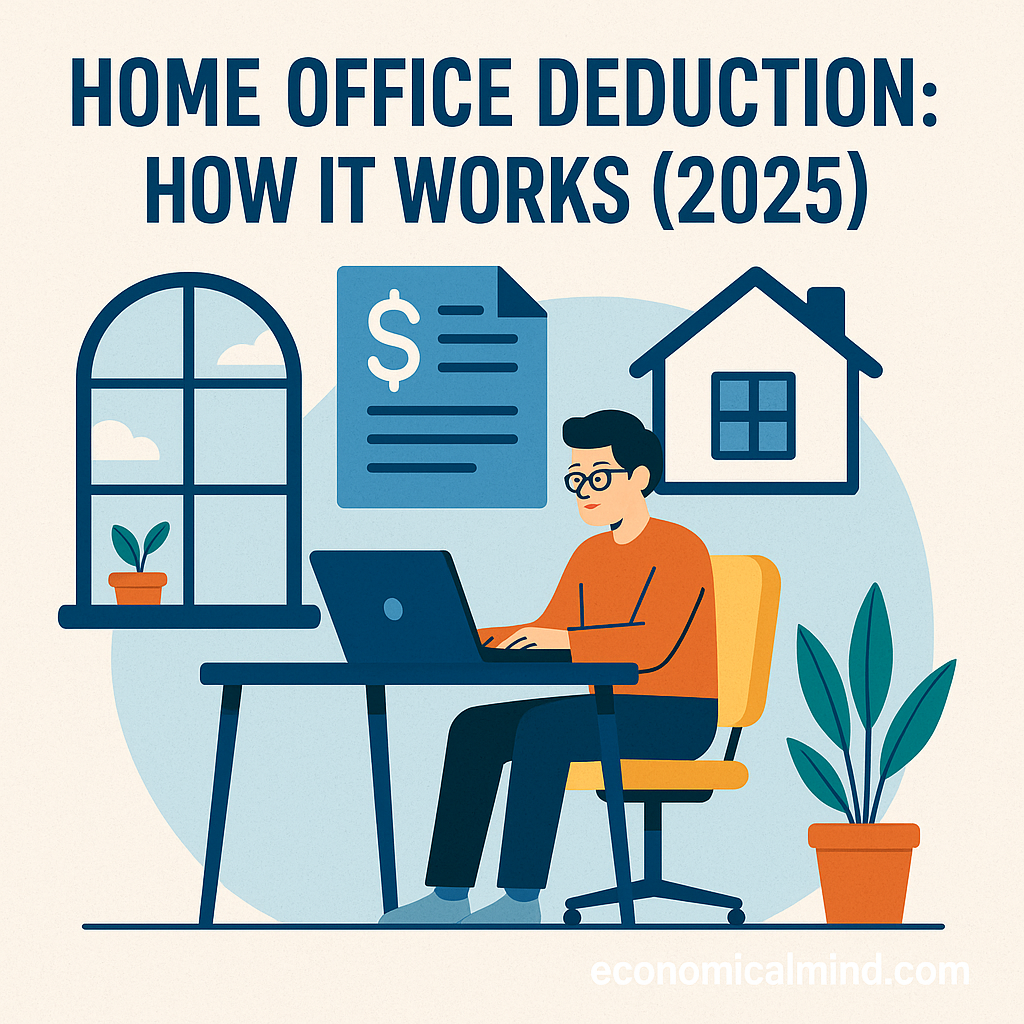
With remote and hybrid work here to stay, more people than ever are turning their homes into productive workspaces. In 2025, the home office deduction remains one of the most valuable — and misunderstood — tax benefits available to freelancers, small business owners, and remote professionals. Understanding how it works can help you lower your taxable income and maximize your refund.
What Is the Home Office Deduction?
The home office deduction lets you write off a portion of your housing expenses if you use part of your home regularly and exclusively for business. This means that your office space must be used primarily for work — not for personal activities, gaming, or guests.
If you qualify, you can deduct expenses such as:
- Rent or mortgage interest
- Utilities (electricity, internet, water)
- Property taxes
- Home insurance
- Repairs and maintenance
Who Qualifies in 2025
In 2025, the deduction applies to:
- Self-employed individuals, freelancers, and gig workers who operate from home.
- Remote employees only if they meet strict criteria — typically if their employer requires them to work from home and doesn’t provide a workspace.
To qualify, your home office must meet two key requirements:
- Regular and exclusive use — used consistently and only for business.
- Principal place of business — where most administrative or management activities occur.
Two Ways to Calculate the Deduction
1. Simplified Method
- $5 per square foot of your home office (up to 300 sq. ft.).
- Maximum deduction: $1,500 per year.
- Easiest method for small home offices or simple tax filings.
2. Actual Expense Method
- Calculate the actual percentage of your home used for business (e.g., office is 10% of total square footage).
- Deduct that percentage of eligible expenses — including mortgage interest, utilities, insurance, and repairs.
- Requires documentation but can yield a higher deduction for larger workspaces.
Example:
If your home is 2,000 sq. ft. and your office is 200 sq. ft., you can claim 10% of qualifying expenses.
If annual costs total $25,000 → $2,500 may be deductible.
What You Can and Can’t Deduct
You can deduct:
- A portion of your rent or mortgage interest
- Utilities (electric, water, internet)
- Repairs or maintenance to the office area
- Office furniture and equipment depreciation
You cannot deduct:
- Expenses for non-business areas (living room, kitchen, etc.)
- Upgrades that benefit the entire home (unless partially allocated)
- Personal phone bills or entertainment equipment
Tips for Staying Compliant
- Take photos of your workspace in case of an IRS inquiry.
- Keep receipts and records for all expenses claimed.
- Avoid overestimating your office size — use exact measurements.
- Consult a tax professional if using the actual expense method or claiming other business deductions.
Recent Updates for 2025
- IRS digital audits: The IRS now uses AI tools to verify deduction legitimacy. Keep clear documentation for proof.
- Energy-efficient home improvements: If your workspace uses solar panels or energy-efficient systems, you may qualify for additional green tax credits.
- Hybrid workers: Partial eligibility may apply if you run a side business from home in addition to employment.
How to File
When filing your 2025 taxes:
- Use Form 8829 if claiming actual expenses.
- Use the Simplified Option Worksheet if using the simplified method.
- Attach all forms to Schedule C (Form 1040) for self-employed individuals.
Common Mistakes to Avoid
- Claiming spaces not used exclusively for business.
- Forgetting to adjust for part-year use.
- Double-claiming deductions between personal and business expenses.
- Assuming remote employees automatically qualify — they often don’t.
Final Thoughts
The home office deduction is a legitimate and powerful way to reduce taxable income — as long as you follow the rules. In 2025, the IRS continues to encourage remote entrepreneurship while tightening compliance standards.
Take the time to measure, document, and claim carefully. A few organized steps today could save you hundreds — even thousands — on your next tax return.
